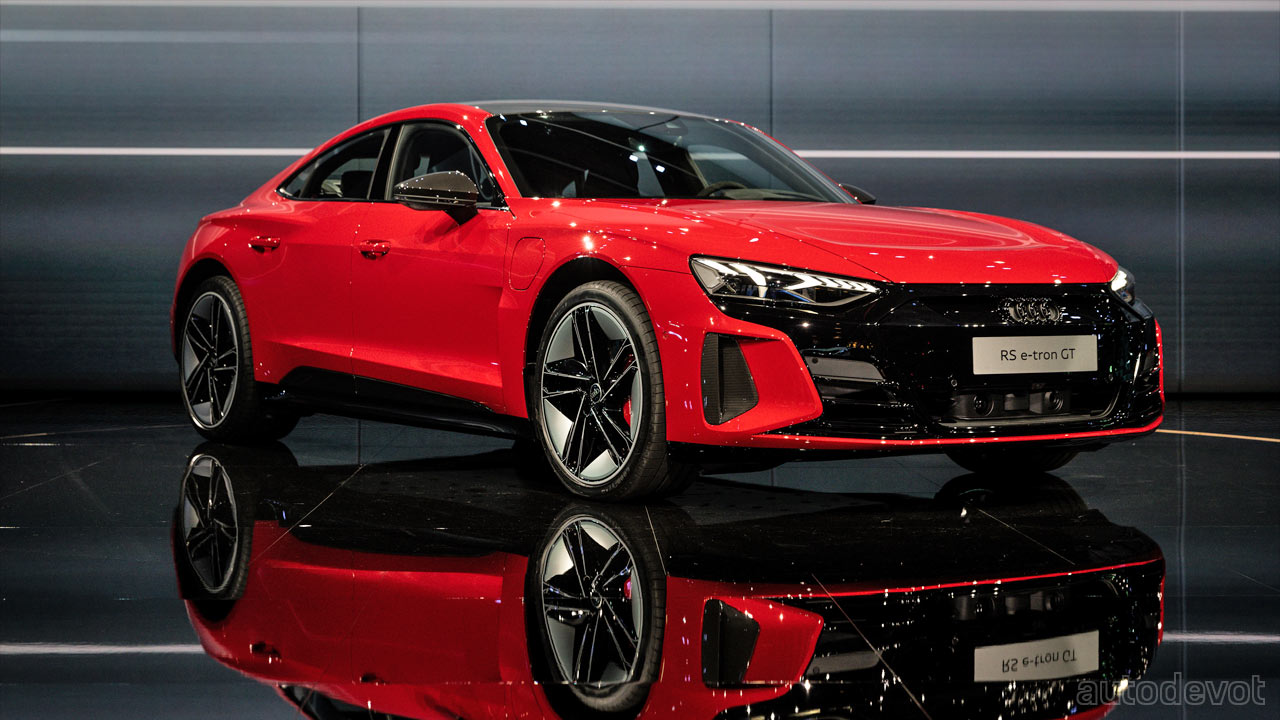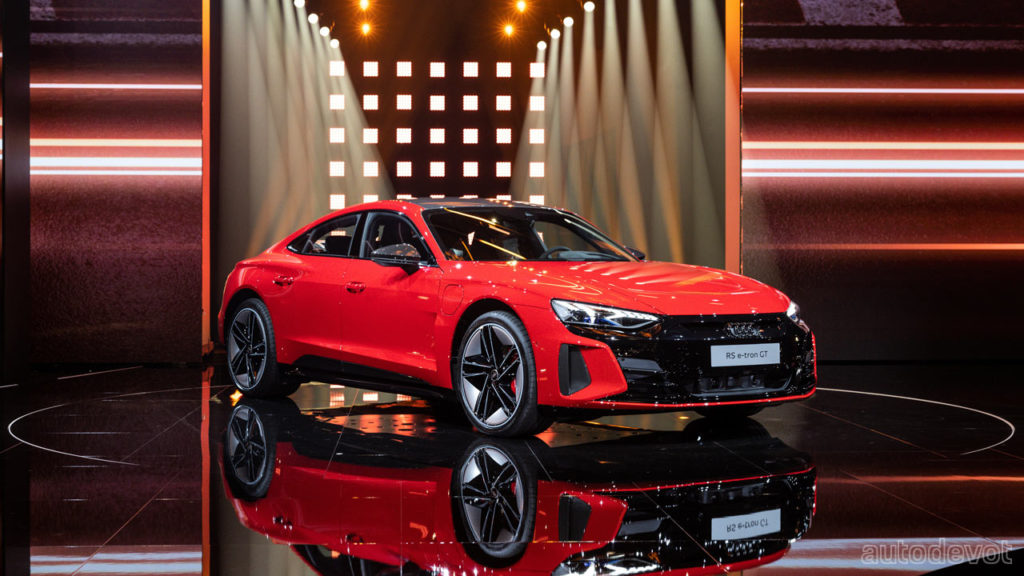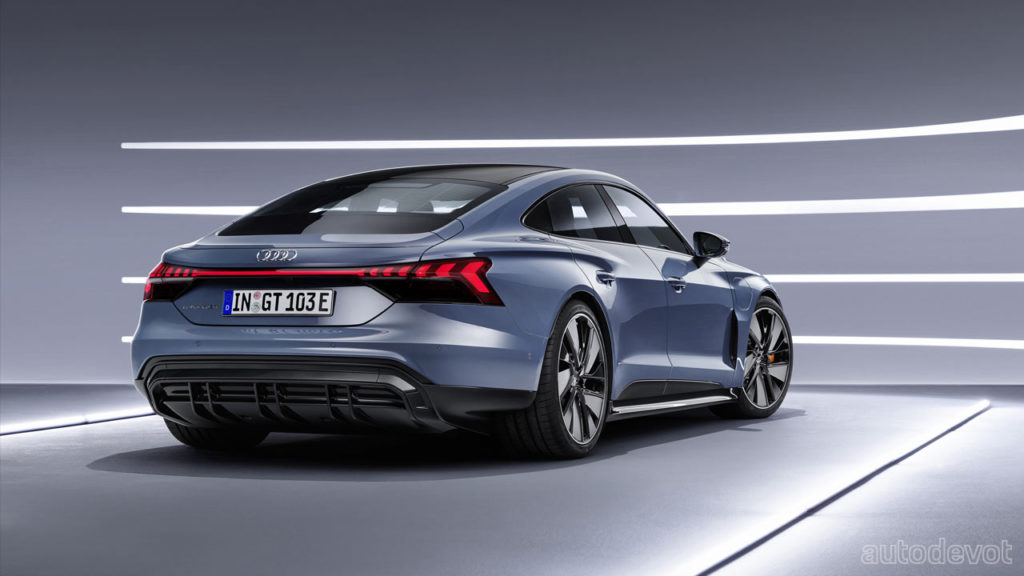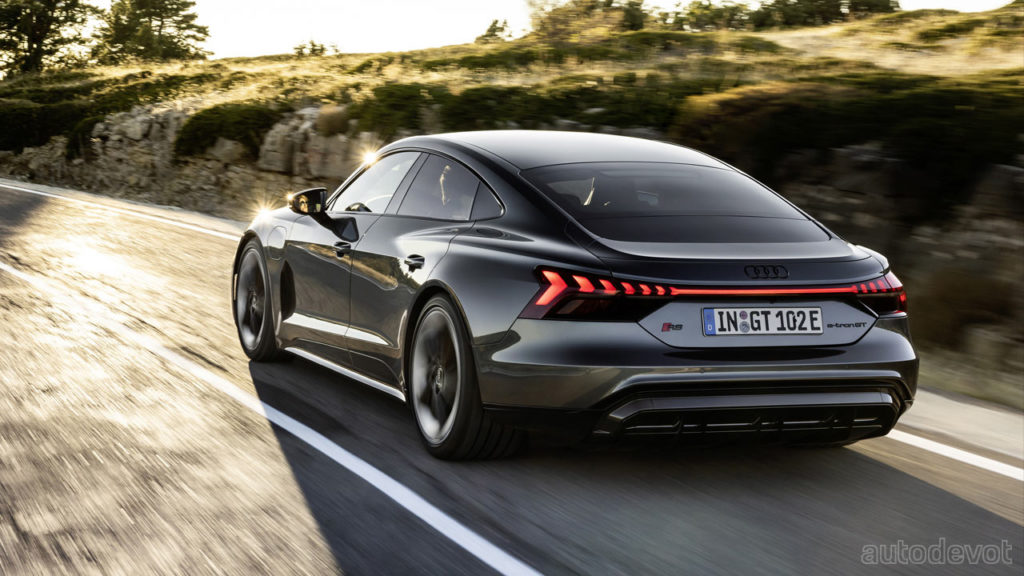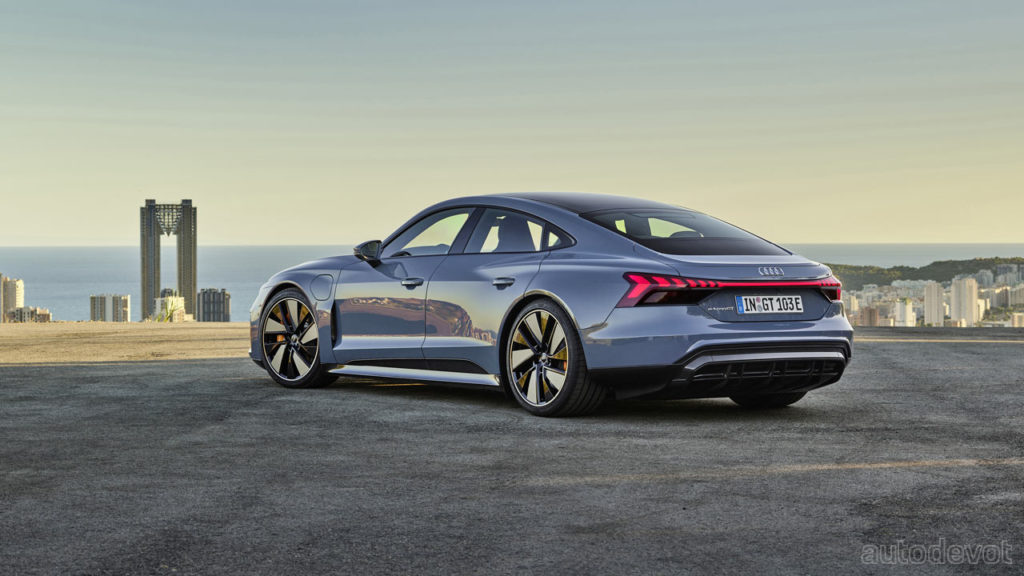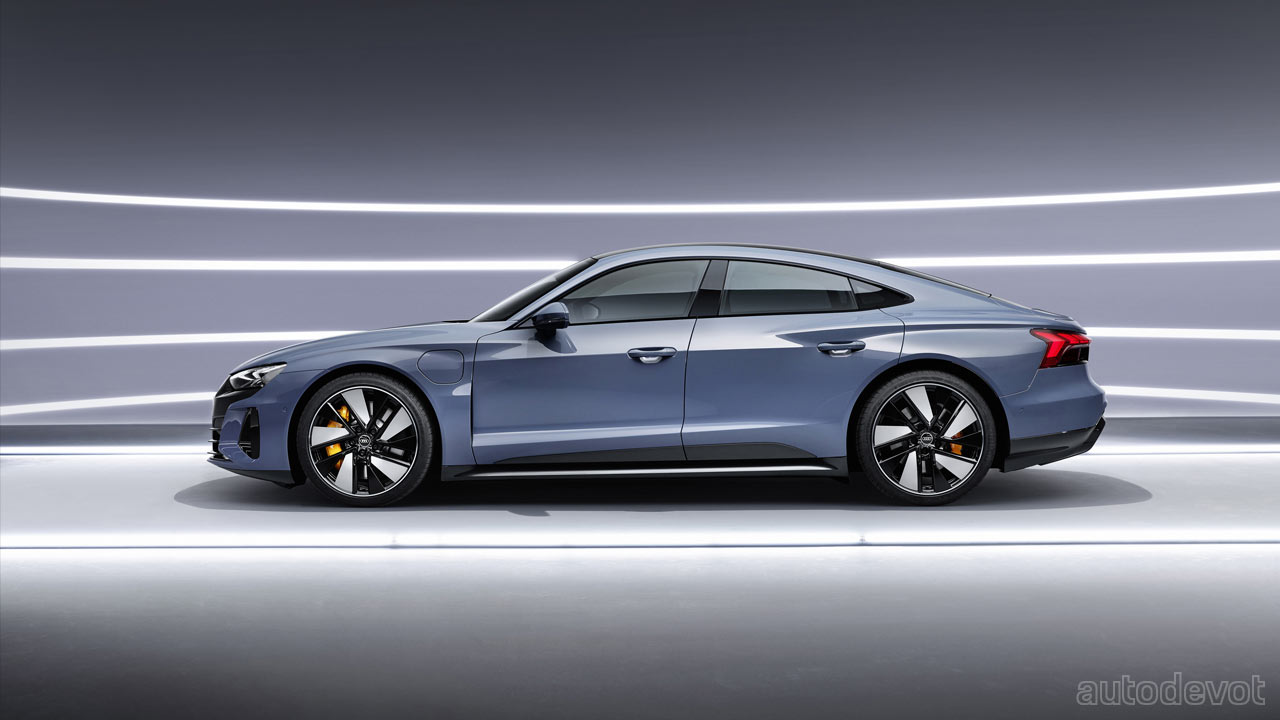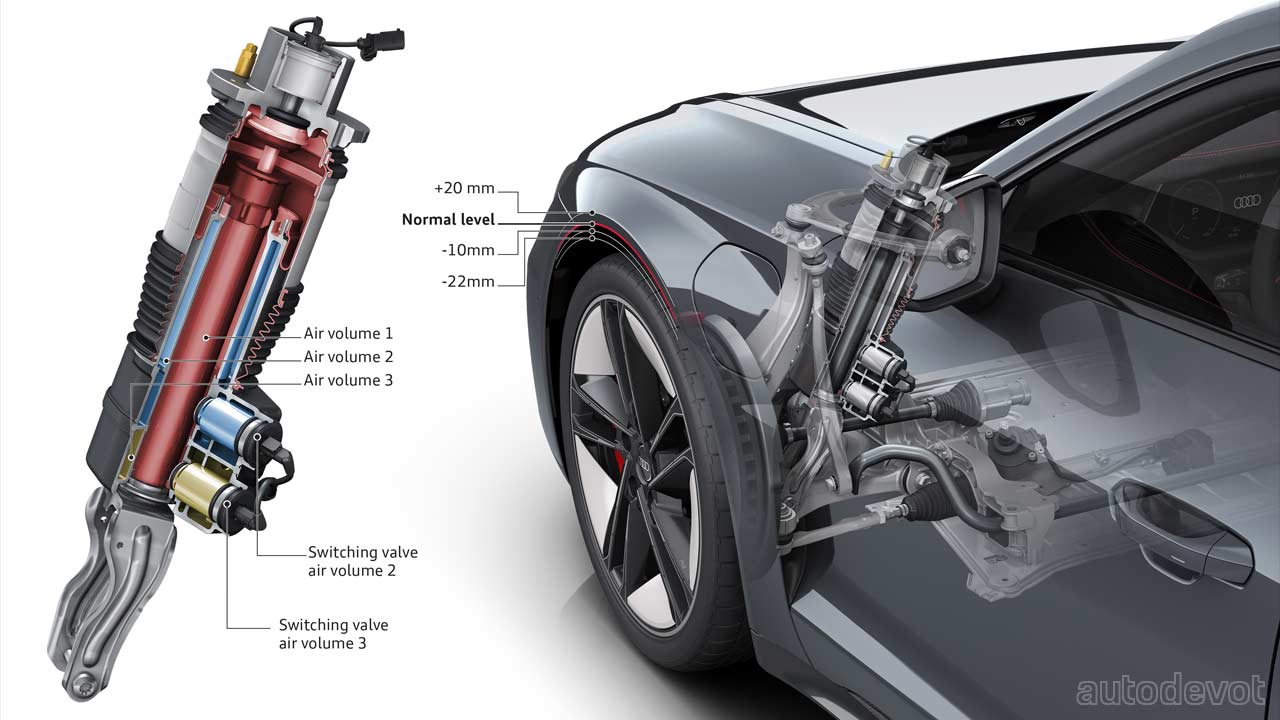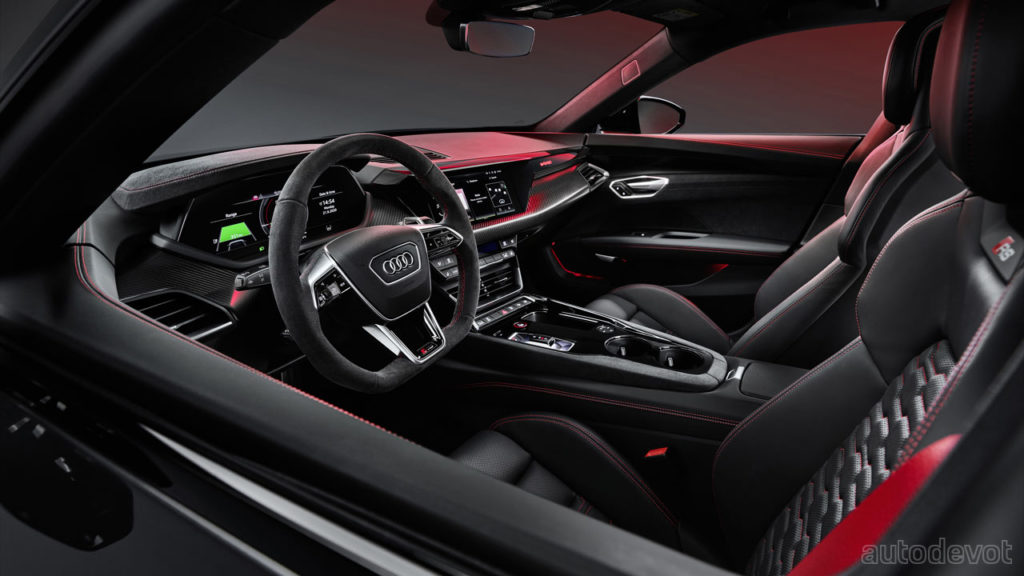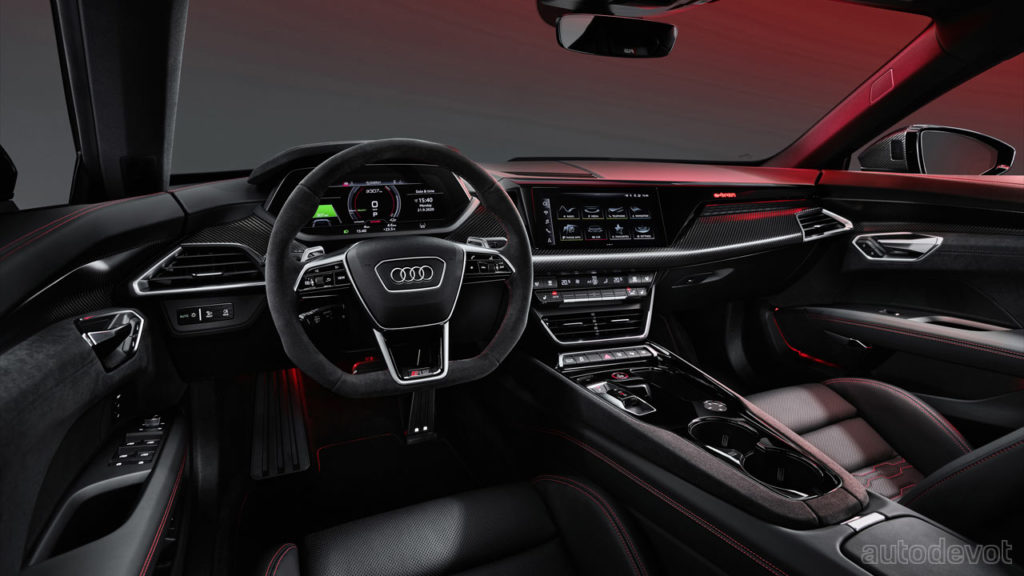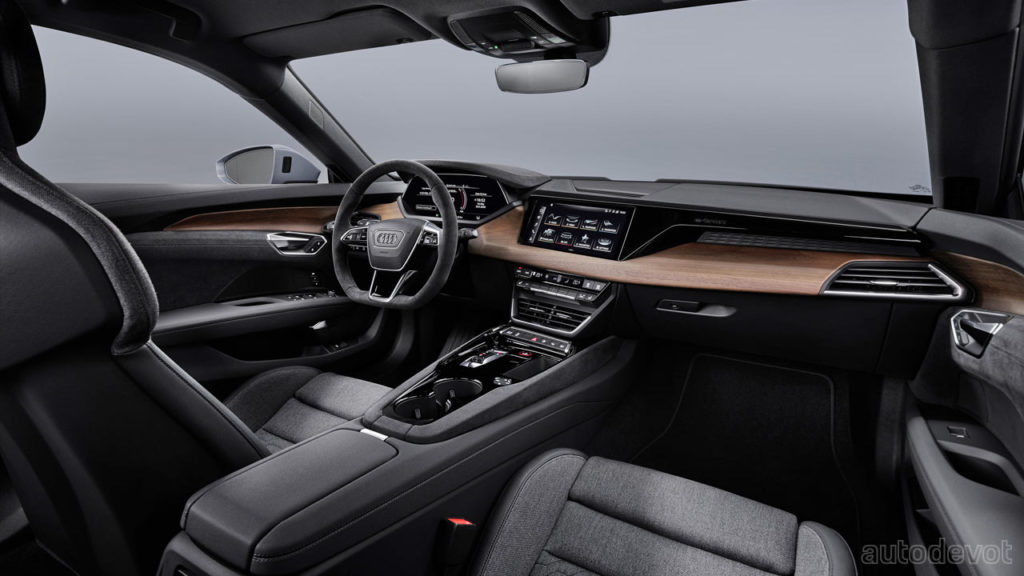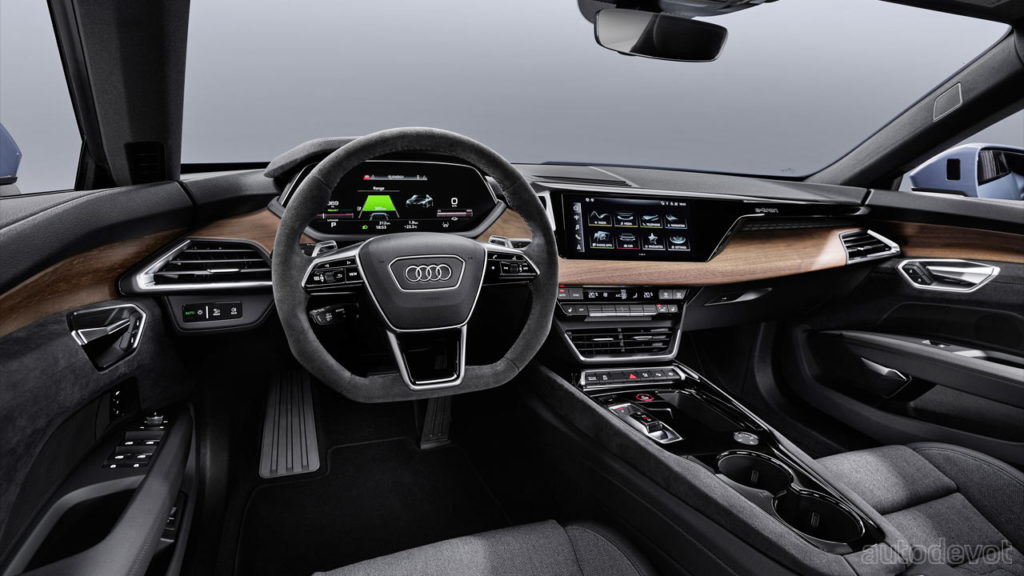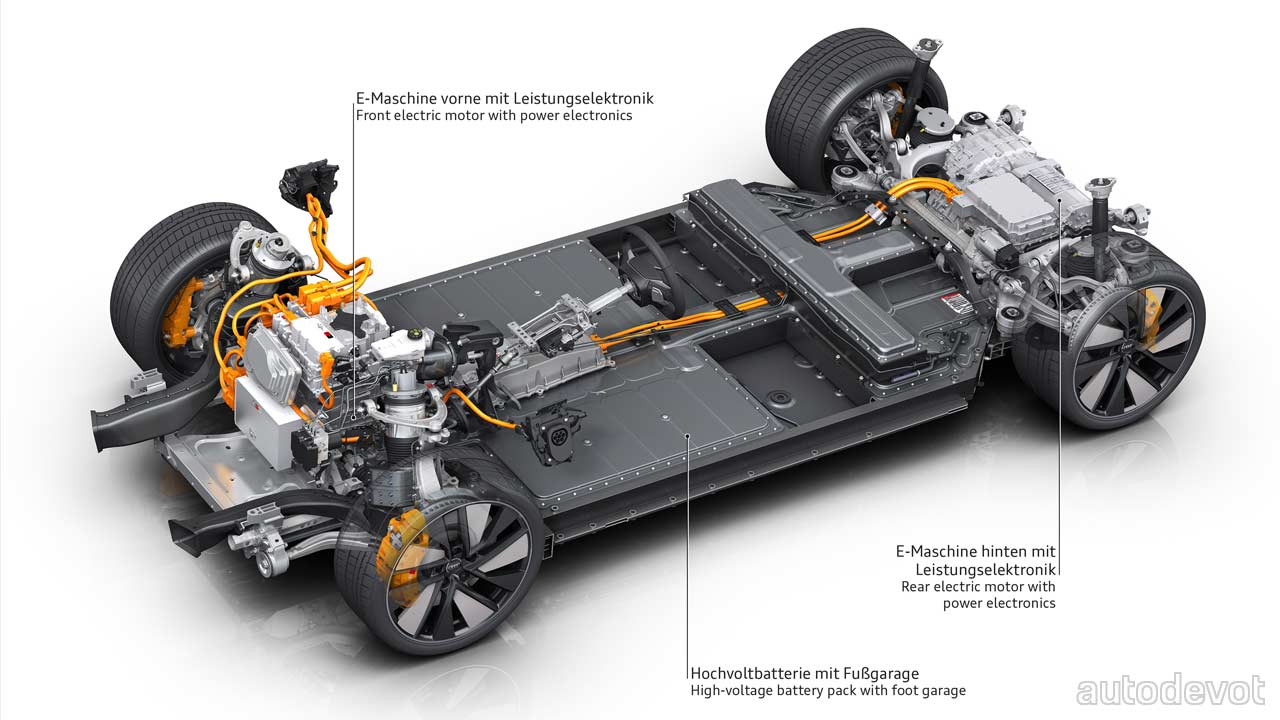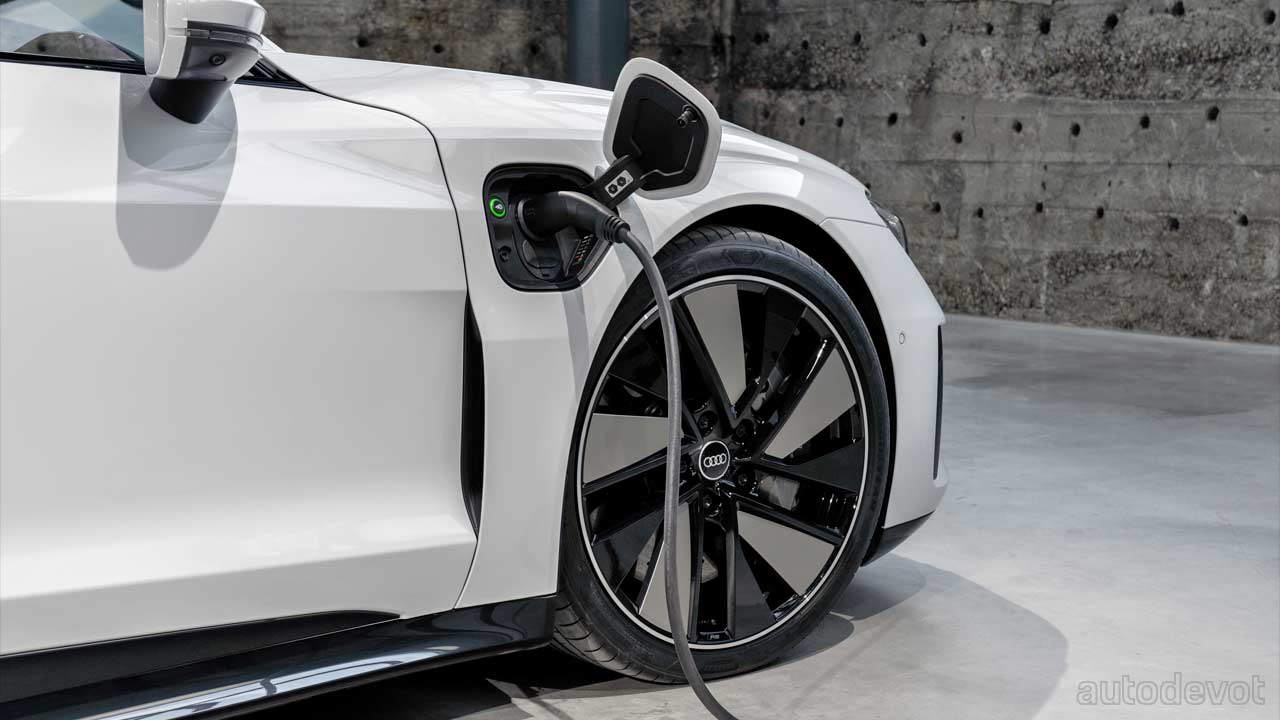The time has finally arrived to unwrap the e-tron GT, the four-ringed version of the Porsche Taycan. Audi has announced the prices (for Europe) as well, which start at €99,800 for the e-tron GT quattro and €138,200 for the RS e-tron GT quattro.
Which means, there’ll be two variants at launch — e-tron GT quattro and a more powerful RS e-tron GT quattro; both are, of course, AWD models. As for the design, well, the e-tron GT barely wore any camouflage so we already knew how the production model would look like long ago. The near-production prototype we saw in December 2020 was almost identical to the e-tron GT concept of 2018, and so is the final form we’re seeing now.
The e-tron GT is more or less the same size as its Stuttgart sibling. It measures 4.99 meters long, 1.96 meters wide and 1.41 meters tall; the wheelbase of 2.90 meters is identical to the Taycan.
As for the features, three variants of headlights are available. While LED headlights with dynamic turn signals are standard, Matrix LEDs are available as an option and comes standard in the RS e-tron GT. Top of the range is Matrix LEDs with laser light. Of course, the lights perform coming and leaving home animations at the front and rear.
As standard, the car rolls off the assembly line with 19-inch wheels, while up to 21-inch designs are available in the options list. As for brakes, carbon ceramic discs are available as an option for both models; they have a diameter of 420 mm at the front axle. Their 10-piston calipers come in gray as standard or can be painted in red or blue as an option.
The adaptive suspension is optional in the e-tron GT quattro and is standard in the RS model. Its three-chamber air suspension can adjust the body to different heights – 22 mm (0.9-in) downward and 20 mm (0.8-in) upward. The drive modes can control the ride height; in ‘efficiency’ mode, for example, the body is lowered for better air flow while the top speed is limited to 140 km/h (87 mph).
The cockpit adopts Audi’s latest design language with lots of sharp lines and angles; the RS model packs a bit more oomph factor with red contrast stitching and sporty seats. The seat upholstery contains recycled materials such as polyester fibers made from old plastic bottles or textiles. Features list includes 14-way electrically adjustable front seats (18-way optional), 12.3-inch Audi virtual cockpit plus, 10.1-inch central display, the capability to store 6 user profiles, natural voice control, Audi connect services, 16-speaker Bang & Olufsen premium sound system, and a host of safety and driver assistance systems including Audi pre sense front and Lane Departure Warning. Predictive efficiency assist comes standard. As always, the options list is big, where the buyers can buy more assistance systems such as Adaptive Cruise Assist in the ‘Tour’ package.
As mentioned, both the e-tron GT quattro and the RS e-tron quattro are AWD models with a motor on each axle. In the regular GT, the front electric motor outputs 175 kW (238 metric hp) while the rear motor outputs 320 kW (435 metric hp). The combined output is 350 kW (476 metric hp) and 630 Nm (464.7 lb-ft); in boost mode, up to 390 kW (530 metric hp) and 640 Nm (472 lb-ft) is available for about 2.5 seconds.
The figures in the RS model are 175 kW (238 metric hp) and 335 kW (456 metric hp), front and rear, respectively. The combined output is 440 kW (598 metric hp) and 830 Nm (612 lb-ft); the former in boost mode is 475 kW (646 metric hp).
The e-tron GT quattro claims to sprint from 0-100 km/h (62 mph) in 4.1 seconds, while the RS model takes 3.3 seconds (in boost mode in each case). The top speed is 245 km/h (152 mph) and 250 km/h (155 mph) (limited), respectively.
As with the Taycan, the e-tron GT too boasts 800-volt architecture for its battery/electrical system, meaning it can better handle the heat, literal or otherwise, and is capable of DC fast-charging at up to 270 kW. Both models get a 93 kWh gross (85 kWh net) battery pack, with claimed WLTP ranges of up to 487 km (302 mi) for the regular GT and up to 472 km (293 mi) for the RS model. A 11 kW AC charger comes standard, while a 22 kW charger will be available at a later date.
Check out some more pictures here.

Leave a Reply
Note: Comments that are unrelated to the post above get automatically filtered into the trash bin.
